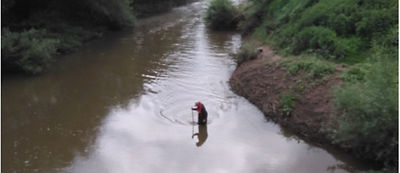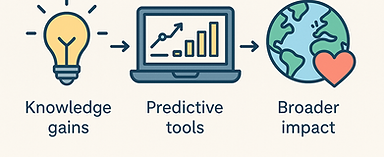
DIRECT Project
DIRECT Project
Predicting the impacts of river reconnection, biological invasions and climate change for the conservation of endangered cold-water fishes in Europe.

Research Questions
-
How do invasive fish behave differently at their invasion front vs. their established range?
-
What are the ecological interactions between invasive barbel and native salmonids (competition, food overlap, habitat use)?
-
How will river reconnection (e.g. fish passes) and climate warming affect future invasion dynamics and native fish conservation?

Study System
River Teme (UK) as a natural experimental site:
-
Invasive barbel (Barbus barbus).
-
Native Atlantic salmon (Salmo salar, endangered in the UK) and brown trout (Salmo trutta).
-
River barriers and fish passes as key features.

Project Partners
-
Host institution: Bournemouth University (UK).
-
Researcher: Dr. Phillip J. Haubrock.
-
Supervisor: Prof. John Britton.
-
Supporting institutions and networks (Senckenberg, University of South Bohemia, etc., from your CV

Short Summary
Europe’s rivers face multiple pressures: dams and barriers block fish movements, invasive species spread rapidly, and climate change warms freshwater habitats. The DIRECT project investigates how reconnecting rivers to help endangered cold-water fishes, like salmon and trout, may also unintentionally support invasive species expansion. Using cutting-edge tracking and ecological modeling, DIRECT aims to guide smarter river management for a sustainable future.

Methods & Approach
-
Biotelemetry: acoustic tags to track fish movements and temperature use.
-
Stable isotope analysis: studying feeding and competition.
-
Agent-Based Models (ABMs): simulations predicting long-term scenarios (1–50 years) under climate change and management strategies.

Expected Outcomes
-
Knowledge gains: better understanding of invasion ecology and fish behavior.
-
Practical outcomes: predictive tools for policymakers and river managers.
-
Broader impact: contributes to EU Biodiversity Strategy 2030 and conservation of iconic species like salmon

Funding
-
This project has received funding from the European Union’s Horizon Europe Marie Skłodowska-Curie Postdoctoral Fellowship programme (Grant Agreement No. 101203662).

Updates
01.08.2025
And so it begins...
On the 01.08.2025, I officially began - once again - as Marie S. Curie Fellow; but this time not as PhD Fellow of the Marie S. Curie International Training Network Aquainvad-ED; but as Post-Doctoral Fellow at the University of Bournemouth.
In the first month, I will set everything up - documents, working station, etc. and begin working on a few projects, including:
- a literature review on the impacts of biological invasions which has (surprisingly) been lacking in the invasion science literature
- a literature review on the spread of biological invasions compiling relevant recent publications as a go-to reference for future works
- a manuscript attempting to link traits to migratory capacity of native and non-native fish species to predict individuals likely to become invasive by i.e. spreading across natural and human-made borders.

